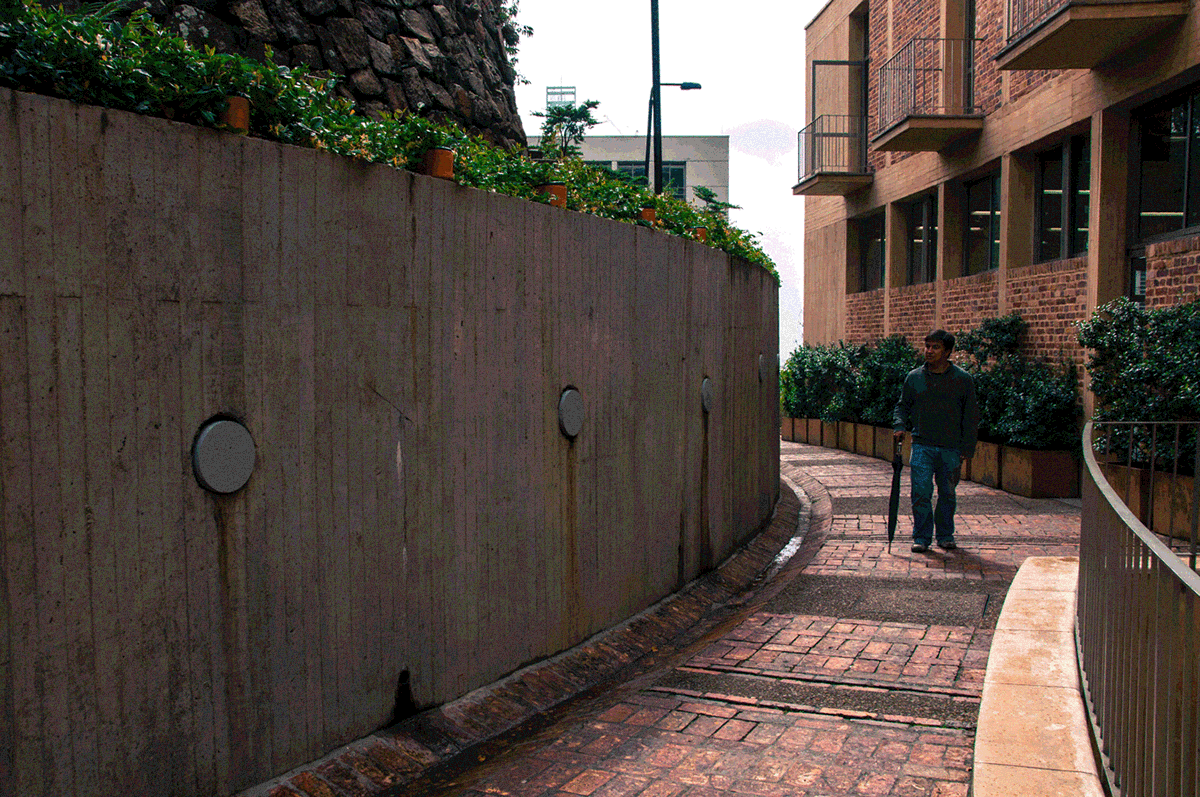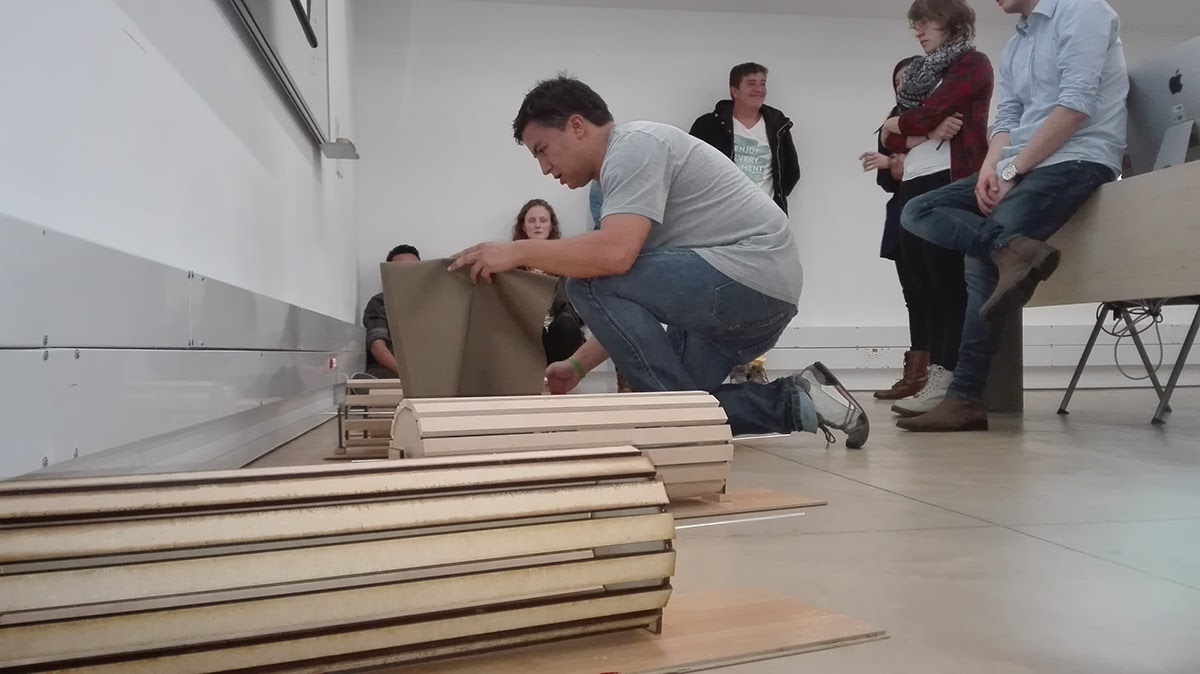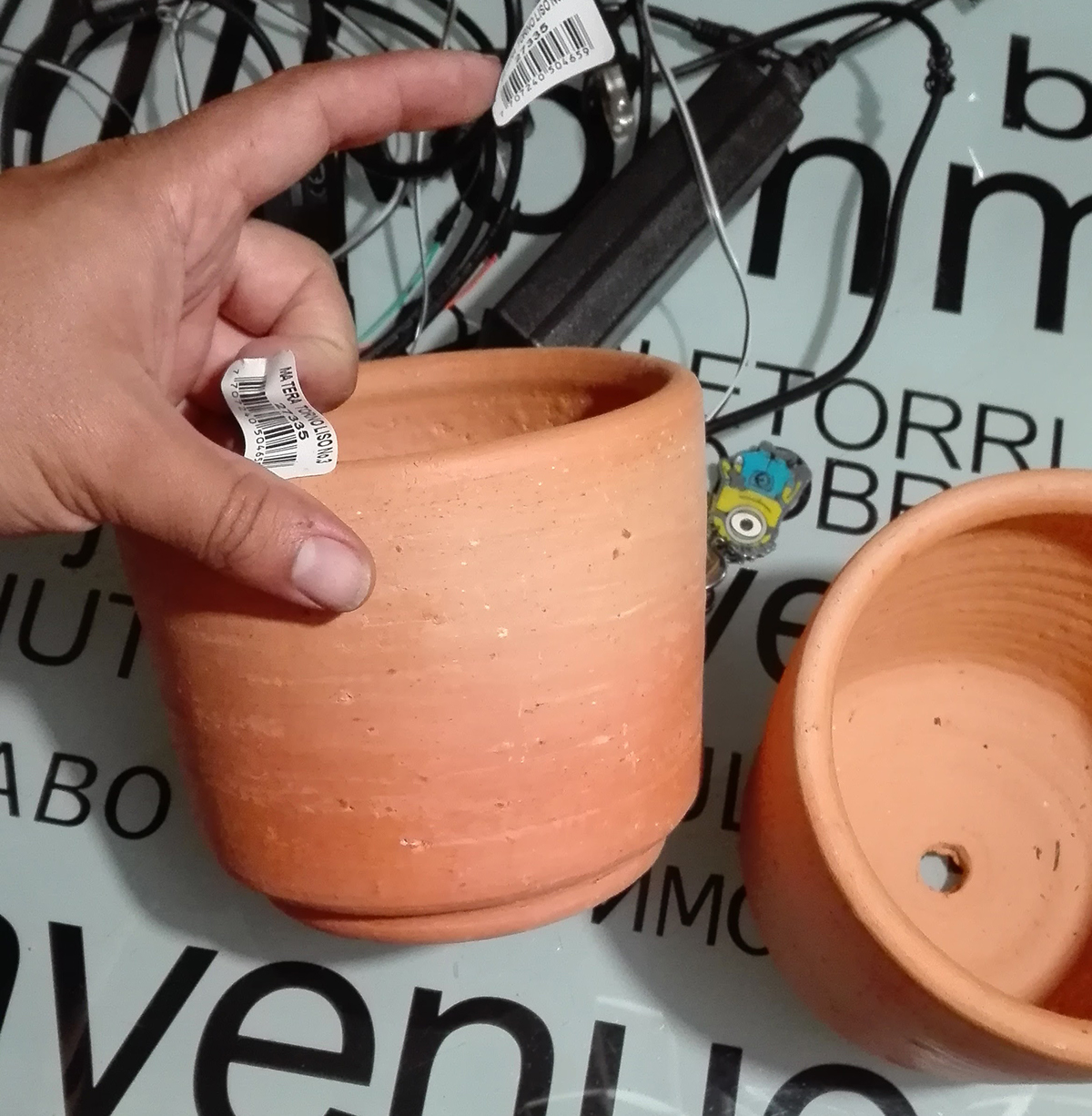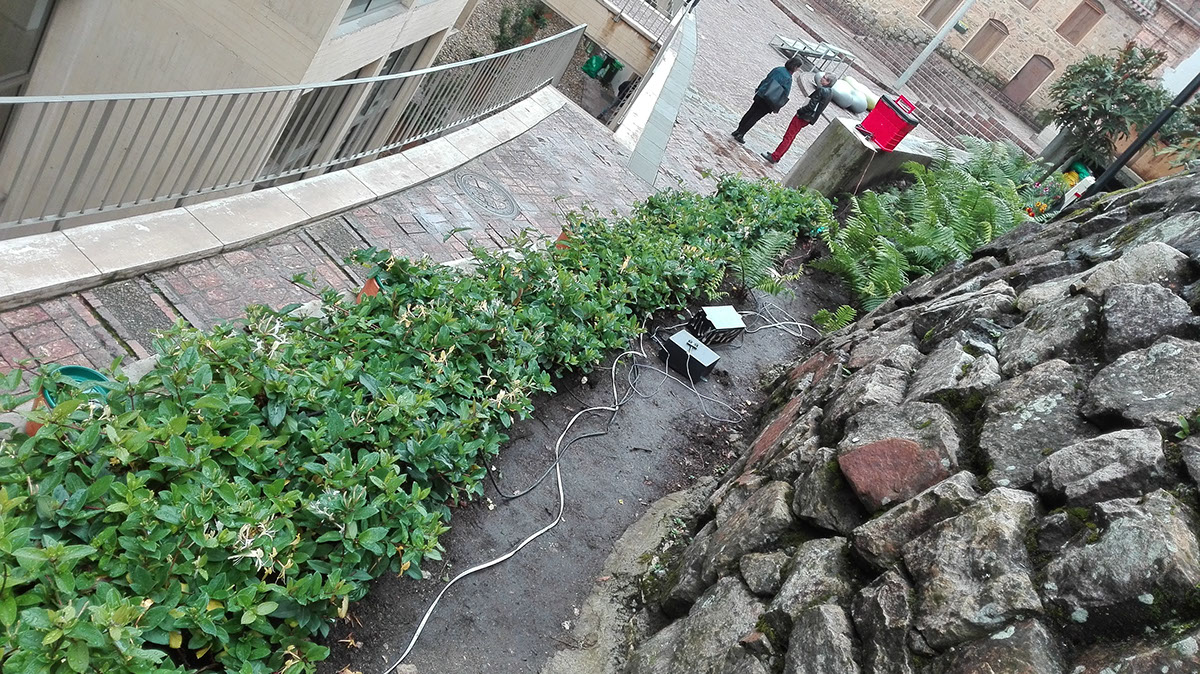Wind Pots
The idea was to create a set of microelements that simulate the sound of the wind passing through, while people walked beside them.
A two-week field test of the installation suggest that people assumes tree behaviours. One set of people try to find where the sound comes and stop to search for the noise speakers. The second type of people continues walking and try to follow the sound as they walk. The remainder group of people just seems not to hear the sound at all, the noise from the installation is not detected within the urban sounds.

The elements had to blend with the local public space, its architectural and environmental conditions. Transforming the selected passage into a sound experience that its almost imperceptible to the eye.

The result is an installation composed of five interconnected plant pot “noise speakers” that created sound mechanically. The speakers are connected to sensors that detect human presence and activate the noise accordingly to the people’s walking direction.

The installation has a sensor in each side of a narrow corridor between two buildings, each of the two sensors triggers a sequential predefined programing for stepper motors within the speakers. The rotation of the motor produces sound with the friction of copper wire with the interior surface of the plant pots that are used as resonators. Motors are set sequentially along the corridor so the person feels that the noise moves with her.
The use of stepper motors allows for precise control of movement and speed; it also allows for adjustments to compensate for differences in hand made plant pots.
Experimentation and creative process
Research began with sound produced by aeliophones, also known as wind machines, used in theater and foley sound effects in movies and animation.
Different size models were built and tested to understand wind like sound effect variables.


The work continued to include propulsion with stepper motors using Wiring (http://wiring.org.co/) as a programming framework.
Testing with motors was carried out to determine size and power requirements.
But even the smallest and lightest aeoliphones required a great deal of torque that available stepper motors could not generate significant wind noise.

Experimentation with different materials began, and pottery exhibited interesting resonating properties that required low torque and power.

Experimentation with plant pots began, and the first working prototypes were built

Continued to build a complete set with sensors
Further experimentation lead to enhancements in the noise mechanism, a simpler and more reliable configuration.

Cable and weather-proof casing was critical for an outdoor installation

Green plastic tops were added to protect the noise speakers from weather.

The installation blended with the selected public space.

Final installation from different angles


